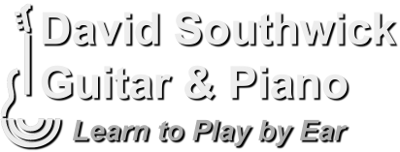Basic Chord Theory
Key Note SignaturesHow Many Sharps or Flats in a Key
Key note signatures refer to the number of sharps or flats in any key. For pianists and other musicians who largely rely on sheet music to play their instruments, it is common to refer to “The Circle of Fifths” to determine key note signatures. However, this can be cumbersome. And many guitarists don’t even refer to keys by their signature. Looking at the major scales one can easily determine the key note signatures by counting the numbers of flats or sharps in the scale. For instance, the key of C has no sharps or flats.
1 2 3 4 5 6 7 8
C D E F G A B C G A B C D E F# G D E F# G A B C# D A B C# D E F# G# A E F# G# A B C# D# E F G A Bb C D E F
- The key of G = 1 # (one sharp)
- The key of D = 2 #
- The key of A = 3 #
- The key of F = 1 ♭ (one flat)
- etc.


Thanks for the lessons it’s helping me for sure! I just wanted to confirm is the key of F in the chart is the progression correct? I applied the wwhwwwh rule. But it didn’t work for F. If it’s correct could you please explain how. Thank you for your time!
OK I got it one whole step from Bb is C. Which was confusing to me since there is no B#. Thanks!
I was just about to respond and saw your extra comment! Thanks for checking out my website. Let me know if there is any other way I can help!
Dear David,
What a wonderful website you have created and your benevolence is truly appreciated – thank you for your download materials.
If I may. I would like to tell you a little about myself:
I am a 62 male who has been retired owing to ill-health and a set of severe physical conditions. Prior to this I played finger-style guitar (in the style of the late Mike Raven – English Folk & Flamenco Guitarist & Composer – English Dances, Scottish & Irish Aires, Jigs & Reels, and a variety of other genres, including Blues & Ragtime.
For many years I have been unable to play & I had sold all my lovely instruments, but I missed playing so much that I bought an Alvarez Jumbo Guitar that was very good for its small price (but did not in any way compare with my previous acoustics) – I could not afford a parlour guitar which had been my preference, but buying the Jumbo was a big mistake as trying to play exacerbated my spinal problems and for virtually two years the guitar stayed in its case.
About seven weeks ago I decide to trade the Jumbo in for a classical guitar (which I never really liked playing in the past) to see if I could find a way of playing whilst using support for my back and arm. I bought a lovely one (although not too expensive) with a beautifully resonant solid cedar top.
I have now been playing again with great enthusiasm, but mostly first to fifth position and concentrating more on the right-hand techniques playing around open chords with my left-hand.
Why do I tell you all of this – well quite simply I have a request to make of you.
My daughter is a Primary Teacher and when she heard me playing again – she asked me if I could teach her to play guitar for use in the classroom. I said of course, but an idea was generated in my mind, and I thought it might be good if I could teach her colleagues at school to play too if there were any willing to learn. My daughter put this to her colleagues and she has got together a class of six, including herself – to start next Wednesday after school.
My request to you is this – may I photocopy some of the pdf resources on your websites and distribute them to the class members? This would obviously be a great help to me. Please note that I am doing the lessons for free – there is no cost to students other than their time and commitment.
In closing let me say thank you once again for your kindness in contributing this website to the benefit of others. Please be assured that I totally respect your copyright in the materials herein and should you not give me permission to use as requested I will honour your decision.
Kind regards,
Andrew Buchanan
Livingston
Scotland
PS. I will obviously direct my daughter & her colleagues to your website.